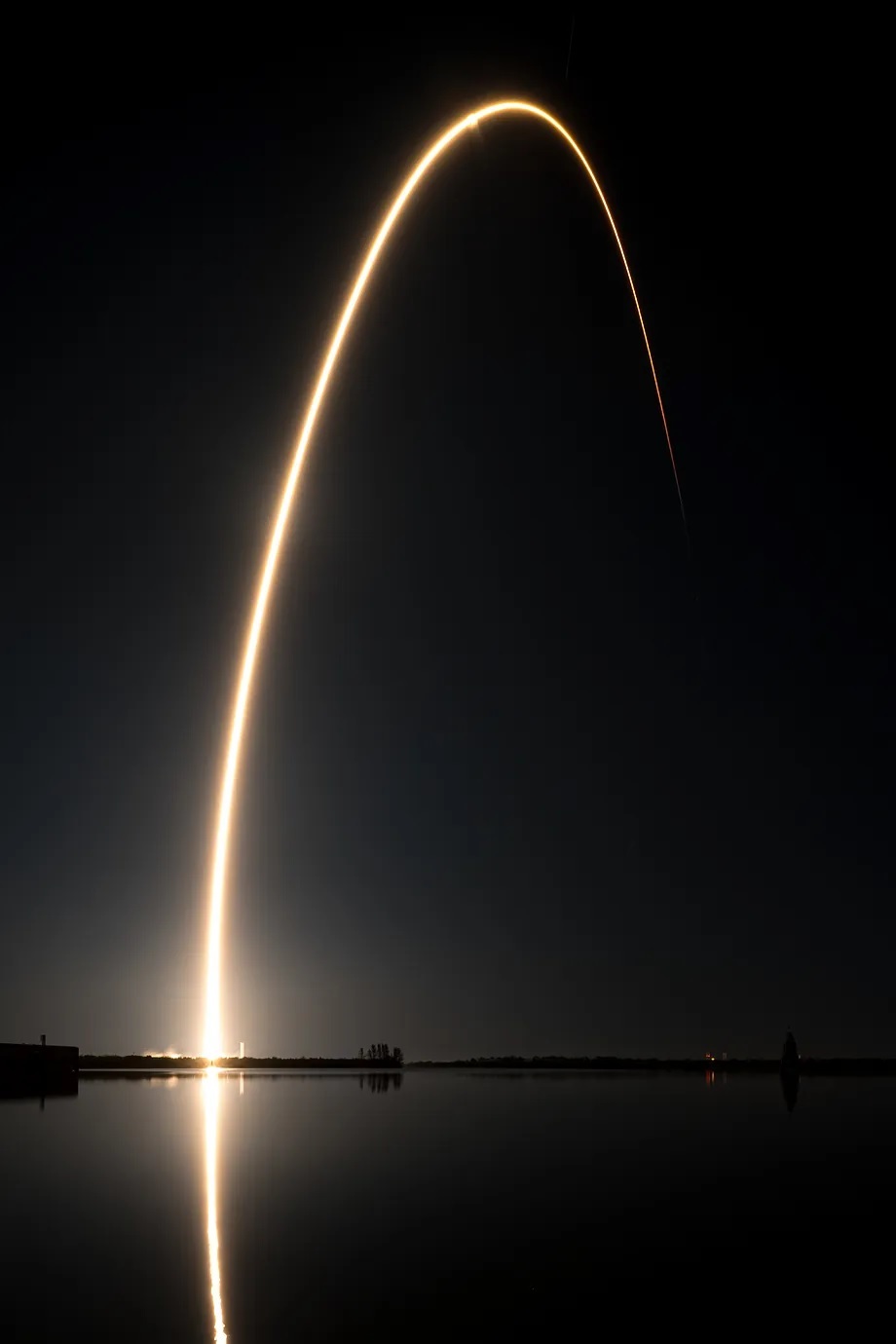t was exactly 8:34 p.m. on Wednesday at Cape Canaveral when the nine Merlin engines of a Falcon 9 rocket began to roar at launch complex 39A, the scene of historic NASA missions to the Moon now leased by SpaceX, the aerospace company of magnate Elon Musk. The rocket's passenger was Spanish and is called SPAINSAT NG I . It is the largest and most advanced satellite created by our industry and, due to its technology and capabilities, is considered the best secure communications satellite in Europe.
It was pitch black night and darkness was almost total in the area of the Kennedy Space Center set up for Spanish journalists covering the start of this Defense mission for our country. NASA was literally closed at that time and since it was not a launch by the space agency but by SpaceX, the buildings in that area of the complex were also inactive. The weather was favorable and a few minutes before the scheduled time, the U.S. company confirmed that both the weather and the rocket systems were ready for launch, which had been prepared nine hours earlier. It was going to happen that night.
Moments after the countdown, a huge fireball began lighting up the Florida sky as the Falcon 9 rocket ascended, carrying with it the SPAINSAT NG I, the first of the two twin satellites that make up this military program funded 70% by the Ministry of Defense and 30% by Hisdesat, the government satellite operator that led the mission.
Then began 31 minutes of vertigo, as that was the time it took to confirm that the launch was a success.
The sequence was explained just before the launch by Miguel Ángel García Primo, CEO of Hisdesat. "Once the launch begins, the first stage of the rocket lasts 162 seconds. The fuel runs out and the nine Merlin engines shut down. Then, when it is about 66 kilometers high, the first and second stages of the rocket separate. It is then that the single engine of the second stage ignites, also a Merlin engine but with the nozzle adapted to operate in a vacuum because we are already in a vacuum."
The rocket continued to climb and about three and a half minutes later, the satellite fairing opened for the first time, exposing the satellite to space. At that moment, it was about 106 kilometers high and from Earth, only its trail could be seen.
"The second stage continues to push, shuts down for a while, and the phase called drift flight begins, a parabolic flight in which, without thrust, the speed is changed to gain altitude. Finally, there is a second ignition of the second stage of the rocket that places it in the desired orbit," García Primo explains. The culminating moment came when it reached 4,000 kilometers in altitude, 31 minutes after liftoff. The rocket released the satellite, "to live its adventure alone."
It has been 15 years of development that depended on what happened in an instant, as the Secretary of State for Defense, Amparo Valcarce, very satisfied after the launch, the first one she witnessed live, reviewed: "Today everything was at stake, and we can say that we have won the game by putting into space a satellite that will serve for secure communications. Spanish, European citizens, and our NATO partners will be safer because the operations and communications carried out by our armed forces will also be conducted with high security standards," stated the highest representative of the Spanish government who traveled to Florida.
In this launch of the Falcon 9 , the first stage of the rocket was not intentionally recovered due to the mission's design, as explained by Santiago Bolibar Piñeiro, Chairman of the Board of Hisdesat. "It is a matter of profitability. We are interested in placing the satellite as close as possible to the orbit it will be working in - 36,500 kilometers - and for that, we need all the remaining fuel that the first stage of the rocket would need to return to Earth in a controlled manner."
